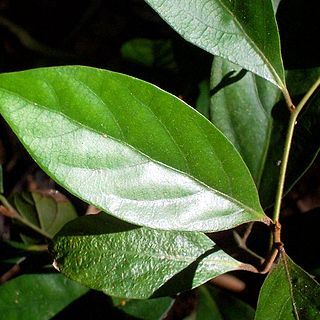A medium sized tree. It grows 10-25 m high. It spreads 6-12 m across. It has a spreading canopy. The leaves are oval and smooth. They are shiny green above and have rusty hairs underneath. They are 7-20 cm long by 3-8 cm wide. New growth is reddish. The flowers are bell-shaped and white. They are 0.3 cm across. They are in small panicles 2-4 cm long in the axils of the upper leaves. The fruit is round and red. It is 4-8 cm across.


